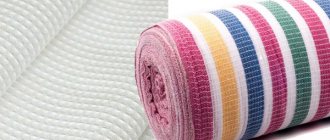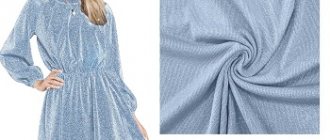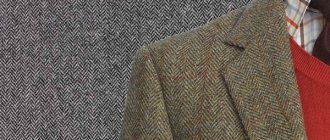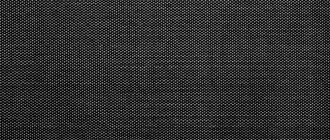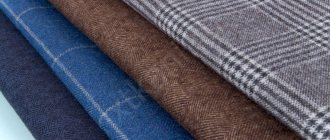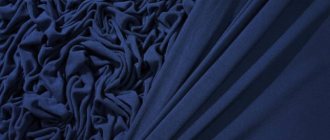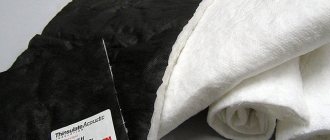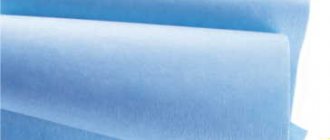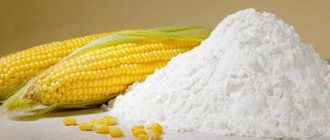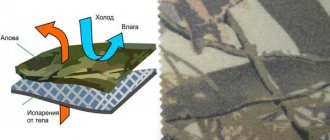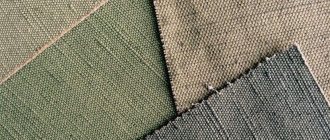How do you get fleece? Its advantages and disadvantages, in what situations is it irreplaceable? How to choose a fleece jacket? What is the difference between cheap fleece and expensive fleece, besides the price?
| Buy men's fleece | Buy women's fleece |
The most favorite second layer of clothing for every traveler and lover of an active lifestyle.
Not all fleece jackets are created equal. The variety of composition and thickness of the fabric, as well as the design and construction of the items themselves, provide an endless number of ideas for an annual wardrobe update in a sporty and casual style.
A little history
In the photo below are the people who were the first to conquer Everest. Let's take a closer look: the cuffs and collar of a woolen sweater are sticking out from under the down jacket, downy trousers are on the legs, and woolen socks are peeking out of the shoes. Yes, climbing is always a challenge to a person’s physical capabilities and overcoming oneself, but imagine how much easier and more comfortable the path to the top could be if the pioneers were dressed in modern sportswear! Warm and breathable wool has always had a number of disadvantages - it is heavy, short-lived, and absorbs moisture abundantly.
Still from the film “Everest. Achieving the impossible." Source: meloman.ru
The search for light, durable, equally warming fabric worried both climbers and scientists. Only 20 years after the conquest of Everest in the 70s, scientists from Malden Mills (USA, Pennsylvania) created a breakthrough technology. First, a cloth was made from a special synthetic fiber. Next, the fabric passed through a machine equipped with rollers with hooks, which, without disturbing the integrity, pulled the threads to the surface. The result was a brushed fabric with many air-filled “pockets” and pores. It was called the English word Fleece, literally “sheepskin” or “fleece”.
GORE-TEX shoes (waterproof)
And this is just a pleasant exception to the rule. Shoes with this technology can be made of artificial materials. However, thanks to the special Gore-Tex laminate that covers the boot on all sides, moisture will not seep into your feet.
This technology is used in shoes for various purposes, both everyday and for recreation (tourism). Rest assured: in shoes with Gore-Tex technology you will not get your feet wet in the winter and autumn slush, and you will be comfortable: dry, warm, not hot. And you will know about the presence of this function by the sign sewn on the shoe or the inscription on the characteristics label: “Gore-Tex”.
Leading manufacturers
The meaningful name hid a fabric superior in quality to its natural counterparts, but Malden Mills refused the patent, thereby allowing the invention to quickly spread in the sportswear market. The discoverers themselves began to improve fleece - the fabric accumulated static electricity and was easily flammable. And we managed to eliminate the shortcomings through various impregnations. And already in 1979 Polarfleece was patented. The word “polar” is not accidental here: the base uses DuPont hollow fiber, imitating the fur of polar animals. In 2007, both the fabric and the company itself were renamed to Polartec, already familiar to every hiker. In addition to Polartec LLC, which is not losing its leadership position, it is worth noting the Italian brand Pontetorto. Today, almost every outdoor clothing brand has budget options for fleece jackets for tourism, sports and everyday life.
Elbrus with PIK
Manufacturing features, properties
Let's look at what fleece fabric is and what it is made from.
At the first stage, the finest threads are obtained from polyethylene terephthalate (PET) fibers, and then they are tied into a dense polyester base. Next, the resulting web is driven through the brush plane. On equipment with brushes, loops are pulled out of it, creating a kind of pile on the surface. The result is a fluffy pile from these polymer nodules, in which many air pores are formed. The material noticeably increases in size without adding weight. A similar cushion of air and polymers gives it softness and heat protection.
The resulting product undergoes a special cleaning treatment, which ensures its ideal shape throughout the entire period of wear. The product is processed with various mixtures that reduce its flammability (when a fire is applied it begins to melt), impart water-repellent or other certain qualities.
Why is fleece so popular?
Fleece is an indispensable garment for winter hiking. Let's find out why. The benefits of fleece clothing are directly related to the properties of the fabric.
- High heat saving rates. Due to the air pockets, fleece retains heat longer.
- Low specific gravity. Simply put, a fleece jacket with equal warmth will weigh much less than a wool sweater or other analogues.
- Hydrophobicity. Even a specially dampened fabric retains less than 1% of its weight in water. A fleece that gets accidentally wet in the rain will dry 10 times faster than a sweater, since wool absorbs thirty times more moisture.
- Vapor permeability is the ability of a fabric to “breathe”. If we try to retain air, then moisture, on the contrary, must be removed. Fleece easily passes water vapor from the human body through the porous fabric and, due to the hydrophobicity of the fibers, remains dry, so water circulates in the fabric without loss of heat.
- Wear resistance and unpretentiousness. Fleece is resistant to mechanical stress and does not require maintenance; it does not wrinkle.
- Soft and comfortable material.
- Convenient to sew and model.
- Hypoallergenic. Wool can cause irritation and itching of the skin; synthetic fabric does not have this disadvantage.
- Artificial origin. To produce fleece, you can use recycled plastic bottles and film. Such synthetic fiber will not be eaten by moths.
A family of tourists at the “Point of the Season”
What to combine with?
Fleece sweaters are worn as loungewear, and are also included in casual and sports looks. They do not go well with business or evening wear.
Jeans are an ideal pair for fleece sweatshirts and hoodies. You can wear a straight or pleated skirt with the bomber jacket. Sweatpants or chinos go well with any type of sweater. If you choose an elongated sweatshirt that covers the buttocks, then you can combine it with tights or leggings. It is recommended to wear warm sweaters as a second layer; as the first layer, choose cotton long sleeves, turtlenecks or sweaters made of thin knitwear.
Shoes and accessories are chosen in the appropriate style. Sneakers, moccasins, sneakers, knitted hats and baseball caps, backpacks and sports bags are suitable.
A fleece jacket is an incredibly practical and comfortable thing. It completely changes the idea of synthetic clothing. Therefore, every fashionista should buy a suitable model made of fleece fabric.
Why do you need a fleece jacket when hiking?
The choice of equipment depends on the content of the hike, but the mandatory general advice for everyone is three layers of clothing. The characteristics of the clothing items themselves will vary, but it is the universal combination of moisture management, thermal insulation and wind/moisture protection that will prevent you from getting wet from sweat, freezing, or catching a cold in the wind and rain.
At the top of Elbrus
Fleece is found in all three stages: from warm base layer underwear to combination outer jackets. A standard fleece hiking jacket is ideal for a mid-layer, heat-saving layer. But it can also be used outside the classic trio, for example, worn without a top in warm, windless weather or inside cool rooms or tents. And you can even use it as additional thermal insulation, for example, to keep warm in a tent, you can put a jacket under your lower back.
Application for the production of workwear
Thick types are produced for sewing insulated workwear. It is applicable to people working outdoors in cold air. The material is used to make work trousers, clothing for those who like fishing and hunting, and camouflage uniforms. It is hemmed as lining into work overalls, mittens, and hats.
How to choose a fleece jacket?
The properties of the jacket will depend on the density of the fleece in it. And the denser the fabric, the heavier it is. Malden Mills kept things simple and divided the fabric into several categories according to weight per square meter. Now this classification has become generally accepted, however, more often on labels you can find not the weight itself, but indices invented by clothing manufacturers. When making a responsible selection, it makes sense to read the value of a particular index on the manufacturer’s website. Fleece jackets themselves can be divided into light, medium and heavy.
Lightweight - 200-400 g/sq.m.
Made from thin, pore-rich fleece with a slight brushing. This jacket weighs very little, is compact, and dries quickly. Thin material is convenient for creating anatomical, form-fitting models. The main area of application is the middle insulating layer during active physical activity, for example, cross-country skiing, cycling, running, rock climbing. Here it is important not only to retain heat, but also to remove its excess, eliminating overheating, and the abundance of pores contributes to active moisture removal. It is also worn as a warm base layer at very low temperatures, for example, on bicycle trips along Lake Baikal.
Bicycle trip around Lake Baikal
Pay attention to the sole
This part of the boots comes into contact with the ground when walking, so special attention must be paid to it, starting from thickness, material, and ending with relief.
- The thickness of the winter sole should be more than one centimeter (a thin layer of the sole will radiate cold to the feet).
- It is better to choose a material for the sole that is flexible and waterproof (rubber, polyurethane).
- The relief on the sole will protect you from slipping and falling in icy conditions. Therefore, the more textured the sole, the better. It’s good if the pattern on the sole is directed in different directions - this gives stability on ice.
Non-obvious details
Even the most comfortable jacket has nuances that may not be noticeable in the store, but on a hike create difficulties or, conversely, give an advantage.
Pockets and zippers
It is important that the location of pockets and zippers corresponds to the structural elements of outerwear and hiking equipment. Thus, waist pockets, in which we like to warm our hands, often find themselves squeezed by a backpack or harness. If there is a “zipper” on them, sandwiched between the body and the uniform, it will cut into the skin and cause pain. Take a closer look at models with chest pockets or without them at all.
Hood
A familiar element may also be superfluous. For example, skiers and snowboarders prefer to wear a balaclava, and the hood is forced to fold into an uncomfortable accordion in the neck area. It should be noted that now there are styles of jackets with a special cut of the hood to completely replace the liner. In classic hikes and when a fleece jacket is used as an outer layer, the presence of a hood allows the head and neck area to be warmed, if necessary, in addition to or instead of a hat.
Beach with volcanic sand in Iceland
Hole cuffs
The purpose of the cuff is to secure the sleeve so that it doesn't roll up as you move, so having a thumb hole in it helps provide extra security. However, this detail can create inconvenience if fleece is used as a middle layer, and the outer jacket already has similar sleeves. Or if you need to wear tight-fitting gloves, like those worn by cyclists and climbers.
Style
The style of a fleece jacket affects comfort during a hike. Tight-fitting, anatomical models are comfortable for active sports. Loose, sweater-like cut, on the contrary, for maximum heat retention during sedentary rest. Many brands are not limited only to volume, but produce complex models that follow anatomy. This is especially useful for active movements in thin fleece jackets, but expect to pay a premium for the thoughtful design. The length and proportions of products also vary; there is no general standard. For example, the Scandinavian Norrona is more suitable for tall and thin tourists, while the South Korean Black Yak, on the contrary, is more suitable for short ones.
If fleece is used as a midlayer, consider the characteristics of outerwear. For example, the fleecy lining of a membrane jacket can cling to the fleece's pile and make it difficult to wear, and an overly fitted cut will prevent a loose, baggy fleece from being pulled down.
Halt in Crimea
Color
Fleece fabric dyes well, so blouses made from this material are available in a wide range of colors. You can choose a neutral option or prefer a bright model. Sweatshirts made in pastel colors - powdery, light yellow, soft lilac - look very gentle.
Sports sweaters and bomber jackets are often made from fabric of two colors. But if in bomber jackets individual details are cut out from materials of a contrasting color (sleeves, pockets, shelves, etc.), then sports sweatshirts can have inserts of various shapes and sizes.
Printed models are also popular. It can be a discreet stripe or check, floral patterns or a military-style camouflage pattern.
Young girls can wear sweatshirts and sweatshirts with images of popular comic book and cartoon characters. Bombers are often decorated with bright emblems, and sweatshirts and hoodies are often decorated with various inscriptions.
Flaws
The disadvantages of fleece jackets depend on the quality of the fabric used. Fleece can accumulate static electricity, quickly acquire an unpleasant odor without regular washing, form pills in friction areas, and easily ignite. Try not to dry your jacket by the fire; you should wash it according to the recommendations. If you give preference to branded fabric, in the production of which special impregnations are used and used carefully, then fleece can be worn for more than ten years. In addition, you can consider alternative options - clothes made from merino wool, jackets using SoftShell technology, microfiber non-woven insulation that imitates down and feathers, for example, Thinsulate.
Mouse-traveler in Kamchatka
Today, a tourist can no longer imagine a hike without a fleece jacket. Its combination of technology, design and affordability maintains its leadership in the heat-protecting hiking clothing category. All that remains is to assess the upcoming weather conditions and the amount of physical activity, and the range of fleece jackets already has a ready-made solution.
Nuances of care
One of the advantages of Fleece is its ease of use.
It washes well, dries instantly, and does not require subsequent ironing.
However, its synthetic composition requires compliance with some simple conditions:
- Polyester fabrics can be washed at a water temperature of no higher than 40 degrees; if you use a machine method, then on a gentle cycle, without intense exposure. It is strictly not recommended to twist or spin at high speeds; the item may lose its shape.
- It is better to hang the product on hangers so that the moisture runs off, and then dry it on a towel. Do not dry on hot radiators, heaters, or over an open fire.
- Ironing is also not allowed, since at 60 degrees the polymer begins to break down and melt.
- There is no need to use washing powders. It is safer to use the liquid form. After using detergents, it is recommended to rinse thoroughly.
In short, the unique qualities of fleece, as a modern and practical material, are increasingly used in the manufacture of sports, tourism, children's and casual clothing.
It is becoming in demand among consumers of different ages and needs. The product is being improved, new modifications and additions to the main fabric appear. When choosing products, it is important to pay attention to the manufacturer; it is better to contact those who have already established themselves in the market. Among the manufacturers of products for alpine skiing, snowboarding and long walks in the cold season, Stayer has established itself as a company that produces stylish items at a low price. In the article, we talked about the features of the material, explained what polar fleece and microfleece are, as well as how to use this fabric.
Women's fleece suit KATRAN Astra red-gray
Photo: pokupki.market.yandex.ru
The Astra Katran women's fleece sports suit was created for active, cheerful and modern females. A bright jacket in a beautiful red color attracts attention. The semi-fitting cut gives the figure a special femininity. The trousers and jacket have 2 pockets with a hidden zipper. A mesh made of antibacterial material is sewn into the pockets and hood. The trousers are a beautiful gray color that always looks stylish and is very practical to use. The suit is warm, worn as both the first and second layers of thermal underwear. Ideal for walks in city parks, in the country, in the forest, fishing and hunting.
Women's fleece suit KATRAN Astra red-gray
Advantages:
- Fleece suit
- Anatomical cut
- Polyester 100%
- Fleece 240 g/m
- Season: all season
- Slightly tapered trousers
- Fitted jacket
